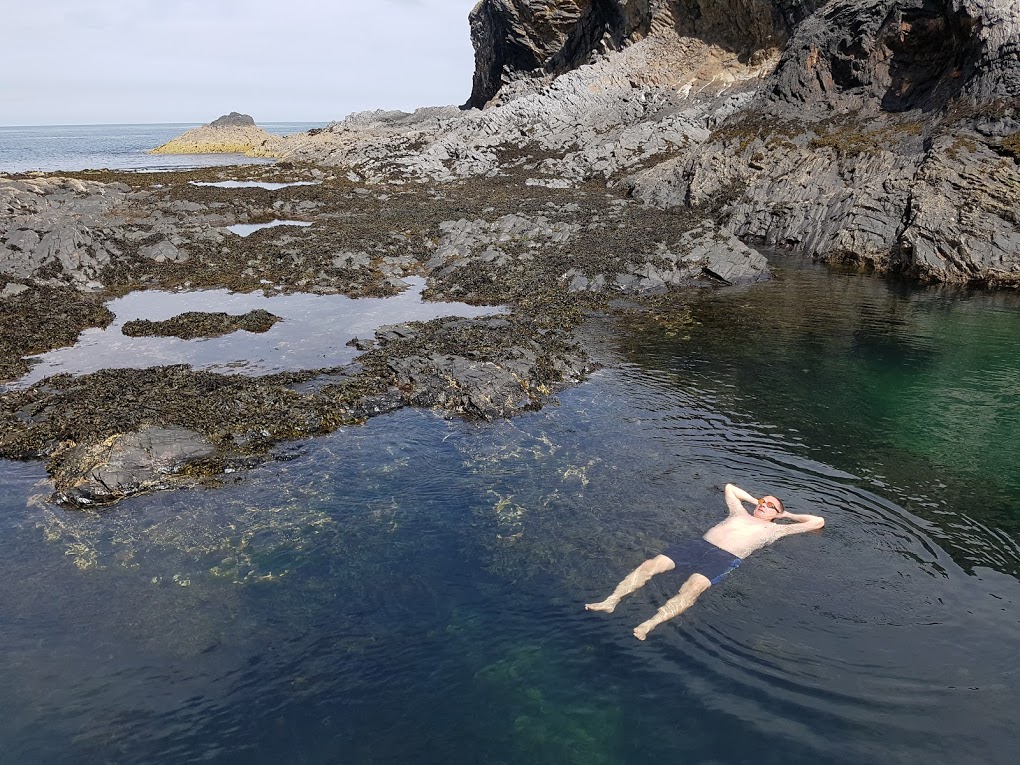Why you can’t free your neck on your back like you can face down, and how to deal with it…
Picture a person lying back in sparkling water, smiling up at the cloudless sky. It’s a classic image of liberation and escape, frequently used on holiday adverts.
But look closely at anyone floating on their back and you’ll probably observe a ‘chin up’ head and neck arrangement, which means an arched back and restricted breathing. To float on the back, people almost always tip their head back.
This isn’t easy to prevent because, if you lie on your back in the water and do nothing, your head flops back against your spine anyway.
In Alexander Technique lessons, when we work on the table, ‘semi-supine’, we rest the back of the head on a few books. Without them, the head doesn’t have enough support and this can cause discomfort and dizziness.
Teaching people to swim on the back is tricky. Learners are likely to throw their head back against the spine because of the baby panic reflex. There’s also a feeling that using the weight of the head by tipping it back to look right up at the ceiling, or even backwards, helps flotation. In a crude way it does, but it doesn’t help us move, if we want to go anywhere.
So, how do you swim on your back without shortening the back of your neck?
You need to keep the length in your neck and send the crown of your head away from your spine, to prevent your head from going back. Think of being a saucer shape. If you’re kicking, the crown of your head and your toes will be slightly out of the water. The pelvis should be allowed to drop with knees staying under the surface. The upper back should be fully resting in the water. Men, especially, need to think of keeping the back wide to avoid sticking the chest out, which significantly hinders buoyancy. Think of your shoulder blades staying away from each other and keep space in your armpits.When floating in the sea on my back, I like to put my hands under my head for support.
It’s different on the front. With your face down, looking down, you can give the weight of your head completely to the water. The deeper you let it go, the freer your neck will be. As you release your head from the top of your neck into the water, your back opens, and air flows freely into the water.
The thing to watch on your front is what happens when you start trying to get anywhere. It’s natural to want to look forward and, when horizontal, this can very quickly lead to a shortened neck and back. And then there’s moving the head to get your face out to breathe, which creates further challenges to someone wanting a free neck.
So for true relaxation, float face down, swim underwater looking down, and try not to be in too much of a rush to get anywhere. Turning on to your back to breathe is great but don’t get stuck there!


